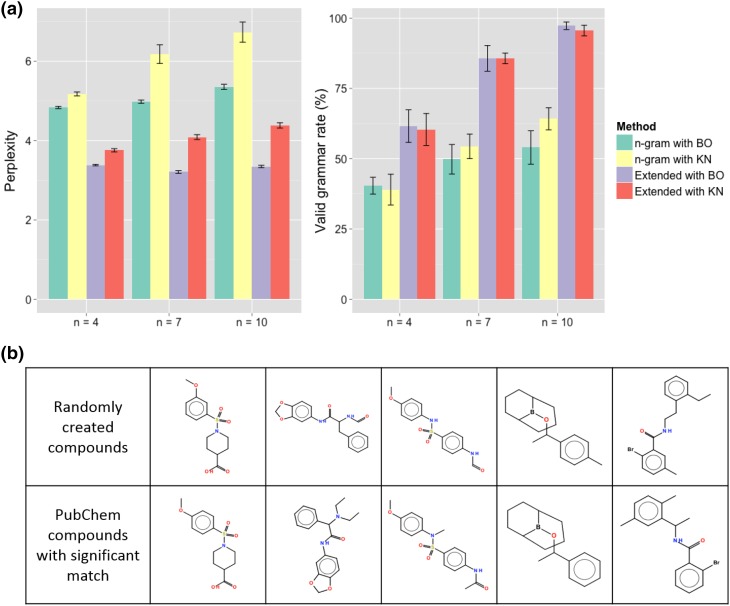Fig. 3.
a Perplexity scores (left) and valid grammar rate (1 − the syntax error rate) (right) with respect to 1000 SMILES strings generated from trained chemical language models. The conventional n-gram and the extended language models were trained with the BO and KN algorithms. The error bars represent the standard deviations across the 10 experiments corresponding to different training sets. b Examples of molecules generated from the trained chemical language model with (top). The bottom row displays the most similar PubChem compounds that had the Tanimoto coefficient 0.9 on the PubChem fingerprint

